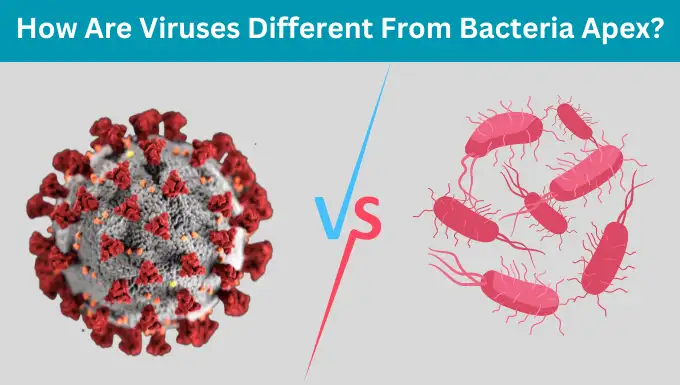News
Demystifying Medical Malpractice: Your Guide to Understanding the Legal Journey

Medical malpractice often evokes images of severe medical mistakes and substantial financial compensations. It encompasses situations where healthcare providers neglect the standard of care, resulting in patient harm. Successfully navigating malpractice claims demands substantial evidence and legal expertise, underscoring the importance of understanding medical procedures and legal intricacies. Plaintiffs encounter difficulties challenging healthcare professionals’ decisions, making specialized legal firms essential for guiding clients through this intricate process.
Identifying Medical Negligence
Determining medical negligence in malpractice lawsuits requires meeting specific criteria, including establishing a provider-patient relationship and proving care below accepted standards, resulting in harm. The initial stages of a malpractice claim, involving reviewing medical records and consulting legal experts, are foundational, requiring a comprehensive understanding of local and federal laws for accurate and efficient filing. Robinson and Associates, a reputable legal firm specializing in medical malpractice, can provide invaluable guidance throughout this intricate process. Clients can navigate complexities and pursue just compensation for damages with their expertise. Their track record of success and dedication to client advocacy make them an indispensable resource in pursuing justice.
Understanding the Pretrial Process
Before a case ever reaches a courtroom, the pretrial process sets the foundation of the legal contest ahead. It is a window for both parties to probe the strengths and weaknesses of each other’s cases. Discovery, which often includes a thorough exchange of documents, medical reports, and interrogatories, is complemented by sworn out—of—court depositions that can make or break a case.
Settlement Negotiations Explained
It’s a common misconception that most medical malpractice disputes end in a dramatic courtroom showdown. The reality is much more prosaic, with settlement negotiations resolving many cases. These negotiations are a back-and-forth between the defendant’s and the plaintiff’s legal teams, with each side appraising the evidence’s strength and the trial risks. The plaintiff’s readiness and clear comprehension of their case are crucial.
Taking the Case to Trial
While most medical malpractice cases are settled outside of court, those that go to trial are marathons of legal strategy and stamina. From jury selection to the presentation of evidence, each phase is an opportunity to persuade the jury of one’s position. The assigned judge will oversee the proceedings, maintain legal order, and ensure the trial progresses according to the law.
Appeals and Post-Trial Considerations
The post-trial period is a critical but often overlooked phase of medical malpractice cases. A favorable outcome for either party does not necessarily signal the end of the legal process. The losing party may seek to appeal the verdict, potentially extending the litigation and evolving the case narrative. It’s a period where tenacity and a deep understanding of appellate law come into play.
Financial Aspects of Malpractice Lawsuits
The financial stakes in medical malpractice lawsuits are typically high. Damages awarded can range from compensatory—covering lost wages and medical costs—to punitive, intended to punish egregious medical conduct. Determining the sum involves not just calculating tangible expenses but also valuing more subjective factors, such as emotional distress and loss of quality of life.
Coping with the Emotional Impact of Malpractice Litigation
The path through medical malpractice litigation can take a hefty emotional toll on plaintiffs and defendants alike. It is not merely a financial and legal battle but also a profoundly personal one, often played out in a public arena. Seeking emotional support through professional counseling or community groups is indispensable.
The Role of Legal Representation in Navigating Malpractice Claims
Individuals should only navigate the complex terrain of medical malpractice litigation with skilled legal representation. Specialized firms such as Robinson and Associates bring expertise and resources to bear on such cases. The involvement of such an experienced legal partner is often pivotal to achieving a just and satisfactory outcome. For those interested in a historical and analytical perspective on medical malpractice litigation, it is instructive to explore resources like Medical Malpractice in America: A Timeline, which traces the evolution of malpractice issues and their impact on the healthcare landscape.
News
how are viruses different from bacteria apex

Viruses and bacteria are two distinct types of microorganisms that play crucial roles in biology and health. While they share some similarities, they also exhibit fundamental differences in their structure, function, and behavior. Understanding these differences is essential for comprehending their impact on ecosystems, diseases, and human health.
Structure and Composition
Viruses are microscopic infectious agents that consist of genetic material, either DNA or RNA, surrounded by a protein coat called a capsid. Some viruses also have an outer envelope derived from the host cell membrane. In contrast, bacteria are single-celled organisms with a relatively simple structure, comprising a cell wall, cell membrane, cytoplasm, and genetic material contained within a nucleoid region.
Reproduction how are viruses different from bacteria apex
Viruses replicate by hijacking the cellular machinery of host organisms, inserting their genetic material into host cells and using them to produce new viral particles. Bacteria, on the other hand, reproduce through binary fission, where a single cell divides into two identical daughter cells under favorable conditions.
Host Interaction
Viruses infect specific host cells by binding to receptors on the cell surface and injecting their genetic material. Bacteria interact with hosts by colonizing various body surfaces or tissues and releasing toxins or inducing inflammatory responses.
Genetic Material
Viruses can have either DNA or RNA as their genetic material, while bacteria typically have DNA as their genetic material, contained within a single circular chromosome. Some bacteria may also carry plasmids, small DNA molecules that can replicate independently.
Size and Complexity
Viruses are much smaller and simpler in structure compared to bacteria. They are typically measured in nanometers, whereas bacteria are measured in micrometers. Bacteria exhibit greater structural complexity due to their cellular organization and metabolic machinery.
Classification
Viruses are classified based on their genetic material, structure, mode of replication, and host range, whereas bacteria are classified primarily based on their shape, staining properties, and metabolic characteristics.
Role in Disease
Viruses are responsible for a wide range of infectious diseases, including the common cold, influenza, HIV/AIDS, and COVID-19. Bacteria cause diseases such as tuberculosis, cholera, strep throat, and urinary tract infections.
Treatment
Antiviral medications are used to treat viral infections by targeting specific stages of the viral replication cycle. Antibiotics are used to treat bacterial infections by inhibiting bacterial growth or killing bacteria outright.
Prevention
Preventive measures for viral infections include vaccination, hygiene practices, and antiviral medications. Preventive measures for bacterial infections include vaccination, sanitation, and antibiotic stewardship.
Evolution
Viruses have a high mutation rate and can rapidly evolve to evade host immune responses or develop resistance to antiviral drugs. Bacteria also evolve through mutation and horizontal gene transfer, leading to the emergence of antibiotic-resistant strains.
Ecological Impact
Viruses play vital roles in regulating microbial populations, nutrient cycling, and genetic diversity in ecosystems. Bacteria are involved in various ecological processes, such as decomposition, nitrogen fixation, and symbiotic relationships.
Research and Innovation
Research on viruses focuses on understanding viral pathogenesis, developing vaccines, and exploring antiviral therapies. Bacterial research encompasses areas such as antibiotic discovery, microbial ecology, and bioremediation.
Future Perspectives
Advancements in viral research may lead to improved diagnostics, more effective vaccines, and novel antiviral strategies. Bacterial research holds promise for the development of alternative antibiotics, microbial engineering, and ecological restoration.
Conclusion
In conclusion, viruses and bacteria are distinct entities with unique characteristics and roles in the natural world. While viruses are intracellular parasites that rely on host cells for replication, bacteria are autonomous single-celled organisms capable of independent growth and metabolism. Understanding the differences between viruses and bacteria is essential for disease management, ecological conservation, and biomedical innovation.
Unique FAQs
- Are all viruses harmful to humans? Not all viruses cause disease in humans. Some viruses are benign or even beneficial, while others can be highly pathogenic.
- Can bacteria be beneficial for human health? Yes, many bacteria have symbiotic relationships with humans and play essential roles in digestion, immunity, and vitamin synthesis.
- Why are antibiotics ineffective against viruses? Antibiotics target bacterial cell structures or processes that are absent in viruses, making them ineffective against viral infections.
- How do viruses mutate so quickly? Viruses have high mutation rates due to their replication process, lack of proofreading mechanisms, and genetic recombination.
- What measures can be taken to prevent viral outbreaks? Preventive measures such as vaccination campaigns, public health interventions, and surveillance systems can help mitigate the risk of viral outbreaks.
News
The Science Behind CBD

Cannabidiol, or CBD, is a popular remedy for various ailments. The government recognizes its amazing ability to reduce or eliminate seizures in people as young as two years old. Many people take CBD for arthritis pain, PMS, mental illnesses, and more. Some people swear that it can boost their immune systems. This is all fascinating, but it leaves most people wondering how CBD works. This article will help you discover the mysteries of the hidden system in the body responsible for these amazing benefits.
Endocannabinoid System
We all know about the nervous, endocrine, and digestive systems. We learn about the various systems of the body throughout our education. However, there is one more system we aren’t taught about in school: the endocannabinoid system. This system contains cannabinoid receptors that respond to cannabinoids, including THC and CBD. This system can help regulate parts of the nervous system, including mood, sleep, and even appetite.
Cannabinoid Receptors
Scientists continue to research to learn more about the endocannabinoid system. Right now, they know at least two primary receptors in the body. These receptors are called G-protein receptors. The first one, CB(1), is prevalent in specific brain areas. These receptors are often responsible for the psychoactive effect of particular cannabinoids, like THC. However, they can also help regulate mood. These receptors are found in smaller numbers throughout the body. Other receptors, called CB(2), are found in neurons and even the immune system. This shows us that CBD oil can help boost the immune system.
Continuous Discovery
The endocannabinoid system was discovered in 1988. While this may seem like a long time ago, it’s still relatively new regarding science. Scientists spend years studying various parts of the body and running trials to make accurate determinations. Because of that, there is constant ongoing research regarding this system. Scientists know that this system can help the body achieve homeostasis, but they are still learning everything they can about the receptors and how they work within the body.
CBD Oil’s Role
CBD oil is one of the cannabinoids that will bind to the receptors in the endocannabinoid system. It does not achieve the high that THC does when it binds to the receptors in the brain. Scientists continue to learn how it impacts the immune system and other body systems. Small studies have shown that these receptors can help inhibit cravings for different things, including nicotine and heroin. However, more research is being done. CBD oil should be pure CBD oil like the products sold at OnlyPure to ensure you can get the impact you want without the euphoria associated with THC.
In Conclusion
After discovering the endocannabinoid system, scientists continued to conduct research. The two primary cannabinoid receptors we know about are located in several areas and systems of the body, which tells us that cannabinoids have the power to impact various systems, diseases, and states of the body. As more research is conducted, we’ll learn more about the mysteries of this system, unlocking secrets to medicine we never knew existed.
News
Meet the press s76e49: Insightful Discussions and Analysis on Key Issues

The latest episode of Meet the press s76e49,” Season 76, Episode 49, continues to uphold its reputation as a platform for insightful discussions and in-depth analysis of key issues shaping our world today. In this article, we delve into the highlights of this episode, exploring the guests, topics discussed, key takeaways, and the overall impact of these discussions.
Introduction to “Meet the press s76e49”
“Meet the press” has long been recognized as a cornerstone of political discourse, providing a platform for experts, policymakers, and thought leaders to engage in meaningful conversations about pressing matters. Episode 49 of Season 76 lives up to this legacy, bringing together a diverse range of voices to dissect critical issues facing our society.
Overview of the Guests and Topics Discussed
In this episode, esteemed guests from various sectors, including politics, economics, and social advocacy, joined the discussion. The topics covered spanned a wide spectrum, from global geopolitical challenges to domestic policy debates. Notable figures shared their perspectives on issues such as climate change, healthcare reform, economic recovery, and international relations.
Key Insights and Analyses from the Episode
One of the standout features of “Meet the press s76e49” was the depth of analysis provided by the panelists. Expert opinions were backed by data, historical context, and real-world examples, offering viewers a comprehensive understanding of complex issues. The discussions went beyond surface-level debates, delving into the nuances and implications of proposed solutions.
Impact of the Discussions on Current Affairs
The impact of “Meet the press s76e49” extended beyond the confines of the episode itself. Insights shared during the discussions resonated with viewers, sparking further conversations in both traditional and digital media. The episode’s coverage influenced public discourse, shaping narratives and contributing to informed decision-making on key policy matters.
Audience Reception and Feedback
Feedback from the audience highlighted the value they found in the episode’s content. Viewers appreciated the balanced approach to addressing diverse viewpoints, the depth of analysis, and the relevance of topics discussed. Social media buzzed with discussions, showcasing the program’s ability to engage and inform a wide audience.
Conclusion on the Significance of “Meet the press s76e49”
In conclusion, “Meet the press s76e49” continues to serve as a vital platform for insightful discussions and rigorous analysis of key issues. Its impact on shaping public discourse and fostering informed dialogue underscores its importance in today’s media landscape. As we look ahead, the program remains poised to drive meaningful conversations and contribute to a more informed society.
FAQs about “Meet the press s76e49”
- Q: How often does “Meet the press” air new episodes?
- A: “Meet the press” typically airs new episodes weekly, providing up-to-date insights into current affairs.
- Q: Are the guests on “Meet the press” experts in their respective fields?
- A: Yes, the guests invited to “Meet the press” are often experts, policymakers, and influencers with deep knowledge and experience.
- Q: Can viewers interact with “Meet the press” online?
- A: Yes, viewers can engage with “Meet the press” through social media platforms, where discussions and highlights are often shared.
- Q: How long has “Meet the press” been on air?
- A: “Meet the press” has a rich history, having aired for several decades as a trusted source of news and analysis.
- Q: What sets “Meet the press s76e49” apart from other episodes?
- A: Each episode of “Meet the press” offers unique insights and discussions, but “s76e49” stands out for its timely and impactful topics.
-

 Tech1 month ago
Tech1 month agoUnveiling the Secrets of iamnobody89757: How an Ordinary Person Became an Internet Sensation Overnight!
-

 Blog1 month ago
Blog1 month agoEmbracing Mıllıeyt for a Balanced Lifestyle
-

 Entertainment1 month ago
Entertainment1 month agoGeekzilla Tio Geek: Thrive in Geek Culture with Your Essential Guide
-

 Blog1 month ago
Blog1 month agoFtmç: Unraveling the Mysteries of this Cutting-Edge Technology
-

 Blog1 month ago
Blog1 month agoThe Flower of Veneration Chapter 1
-

 Entertainment1 month ago
Entertainment1 month agoNavigating Niles Garden Circus Tickets: A Comprehensive Guide to an Unforgettable Experience
-

 Entertainment1 month ago
Entertainment1 month agothe Impact of Half of a 1990s-2000s Rock Duo with Six Grammys
-

 Blog1 month ago
Blog1 month agoFour Digits to Memorize NYT: Unlocking Your Memory Potential
